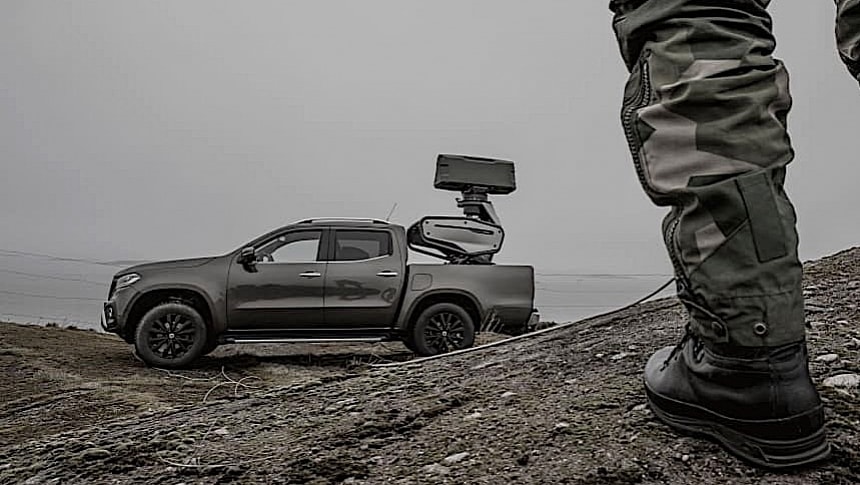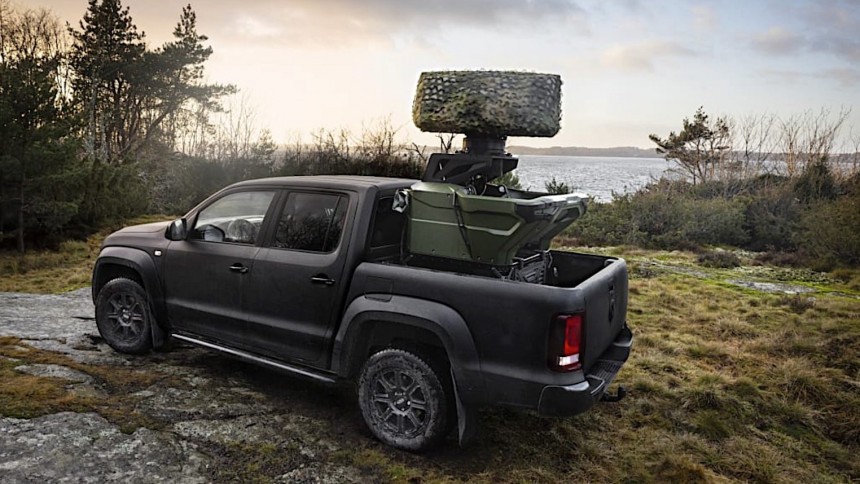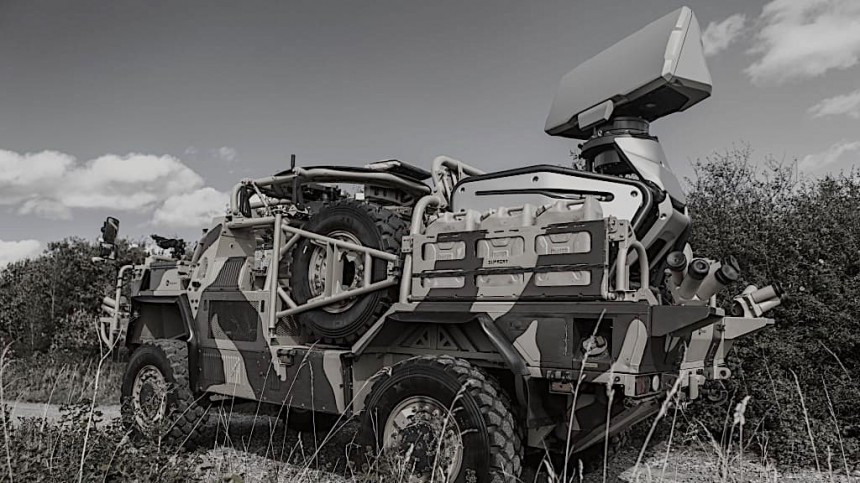When one thinks of a radar, especially the ones meant to be used by the military, the image of large, spinning antennas propped on top of bulky structures is what comes to mind first. But the reality of our day is that radars, or at least some of them, are nothing like that. In fact, there are several of them are small enough to fit in the bed of a pickup truck to be rapidly deployed to where they are needed.
There are several companies in the business of making radars, and it was only earlier this week when we had a look at the "most tested, most advanced radar technology in production today," the AN/SPY-6(V) made by defense contractor Raytheon.
That piece of technology came to our attention after the U.S. Navy spent an extra $677 million to increase the number of such radars it plans to deploy to 38, as the military branch is looking to equip the thing on all its future vessels, from small patrol vessels to aircraft carriers. In all, the Navy will spend $3.16 billion to equip no less than 65 ships with this piece of technology over the next decade or so.
The radar that brings us here today is not meant for the Navy per se, and it's not even made in the U.S. Called Giraffe 1X Compact Radar Module, it is the work of European defense contractor Saab, and it was shown the largest land and air defense industry fair in the world, Eurosatory, that closes its doors on the day I'm writing this.
If you are into military stuff, and chances are you are, given how you're here reading this now, then you probably have an idea or two about what the Giraffe is all about. The term describes a family of either two- or three-dimensional radars meant for both land and naval uses that has been around since the late 1970s.
The Giraffe 1X is a short-range variant of the 3D radar that has been specifically designed to be mobile and a crucial component of the concept the military calls the Ground Based Air Defence (GBAD).
The radar is very small, compared to other gear of its kind, as it weighs just 331 pounds (150 kg). That's about as heavy as an overweight human, and it means it can be loaded on pretty much all kinds of vehicles that can carry overweight humans.
From wherever it is mounted, the technology covers its entire search volume (which is an area of around 47 miles/75 km) once every second, and it should be capable of detecting pretty much all airborne threats, including very small drones, artillery, and mortar shells. Naturally, it also detects fixed and rotary wing aircraft, sending warning to its operators about what it found with the help of its sense and warn features.
How capable is this thing, really? If we are to trust Saab, and there is no reason not to, the radar can pick up a drone that is lighter than a milk carton from a distance of 2.5 miles (four km). Perhaps more mportantly than that, thanks to a feature called Drone Tracker, the Giraffe 1X can make the distinction between birds and human-made flying objects "with a false alarm rate reduced to an absolute minimum."
Technically speaking the Giraffe 1X can be used as a fixed system, installed on the ground, on buildings, or even on a mast capable of supporting it. When used as a mobile radar, the tech can be mounted on pickup trucks, tailers, or even installed inside a helicopter.
It is the mobile use of the radar Saab plans to make easier with the tech it showed at Eurosatory. More specifically, the good old Giraffe 1X was fitted with something the defense contractor calls the Compact Radar Module.
What this system does is allow the radar's operators to fold down the antenna used for detection at the press of a button, making it ready for safer transport to another location. Or, in Saab's words, making the system "excellent for urgent operations with limited operational infrastructure."
The radar, both with the Compact Radar Module or without it, is ideal for use at the hands of the military, but it can be deployed in more benign roles as well. For instance, airport operators could use it to monitor local flight zones, or it could be deployed to look out for airborne dangers during large events.
At the time of writing the Giraffe family of radars is in service with around 16 nations, including the United States and the United Kingdom. The Americans mostly use them on Independence-class littoral combat ship, while the Brits employ it as an aid to the Battery Royal Artillery. As far as we know, no national military is using the system mounted on the backs of pickup trucks yet.
That piece of technology came to our attention after the U.S. Navy spent an extra $677 million to increase the number of such radars it plans to deploy to 38, as the military branch is looking to equip the thing on all its future vessels, from small patrol vessels to aircraft carriers. In all, the Navy will spend $3.16 billion to equip no less than 65 ships with this piece of technology over the next decade or so.
The radar that brings us here today is not meant for the Navy per se, and it's not even made in the U.S. Called Giraffe 1X Compact Radar Module, it is the work of European defense contractor Saab, and it was shown the largest land and air defense industry fair in the world, Eurosatory, that closes its doors on the day I'm writing this.
If you are into military stuff, and chances are you are, given how you're here reading this now, then you probably have an idea or two about what the Giraffe is all about. The term describes a family of either two- or three-dimensional radars meant for both land and naval uses that has been around since the late 1970s.
The Giraffe 1X is a short-range variant of the 3D radar that has been specifically designed to be mobile and a crucial component of the concept the military calls the Ground Based Air Defence (GBAD).
From wherever it is mounted, the technology covers its entire search volume (which is an area of around 47 miles/75 km) once every second, and it should be capable of detecting pretty much all airborne threats, including very small drones, artillery, and mortar shells. Naturally, it also detects fixed and rotary wing aircraft, sending warning to its operators about what it found with the help of its sense and warn features.
How capable is this thing, really? If we are to trust Saab, and there is no reason not to, the radar can pick up a drone that is lighter than a milk carton from a distance of 2.5 miles (four km). Perhaps more mportantly than that, thanks to a feature called Drone Tracker, the Giraffe 1X can make the distinction between birds and human-made flying objects "with a false alarm rate reduced to an absolute minimum."
Technically speaking the Giraffe 1X can be used as a fixed system, installed on the ground, on buildings, or even on a mast capable of supporting it. When used as a mobile radar, the tech can be mounted on pickup trucks, tailers, or even installed inside a helicopter.
It is the mobile use of the radar Saab plans to make easier with the tech it showed at Eurosatory. More specifically, the good old Giraffe 1X was fitted with something the defense contractor calls the Compact Radar Module.
The radar, both with the Compact Radar Module or without it, is ideal for use at the hands of the military, but it can be deployed in more benign roles as well. For instance, airport operators could use it to monitor local flight zones, or it could be deployed to look out for airborne dangers during large events.
At the time of writing the Giraffe family of radars is in service with around 16 nations, including the United States and the United Kingdom. The Americans mostly use them on Independence-class littoral combat ship, while the Brits employ it as an aid to the Battery Royal Artillery. As far as we know, no national military is using the system mounted on the backs of pickup trucks yet.









